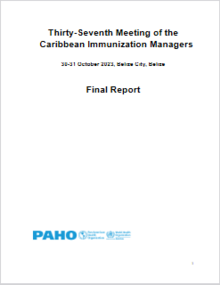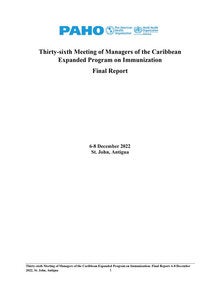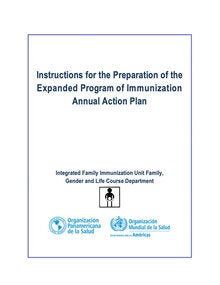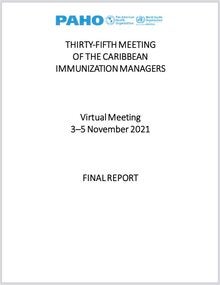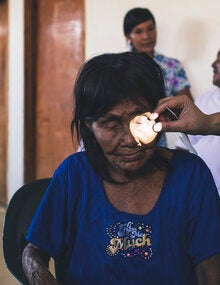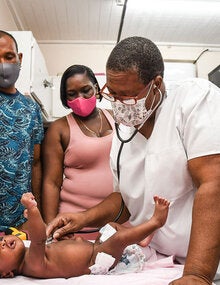SHAA2030 - Goal 10
Sustainable Health Agenda for the Americas 2018-2030

Goal 10: Communicable Diseases
Reduce the burden of communicable diseases and eliminate neglected diseases.
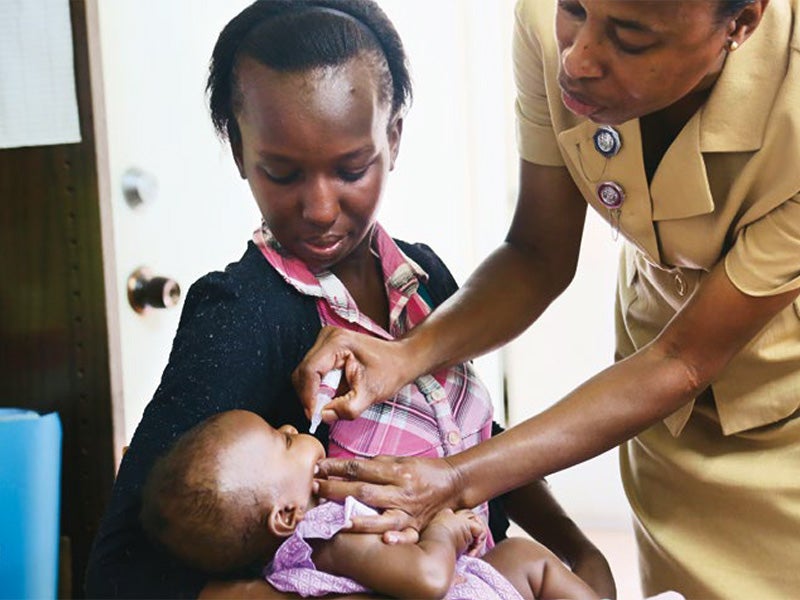
SCOPE
This goal aims to reduce mortality, morbidity, and stigma associated with some of the world’s most devastating communicable and neglected diseases that exacerbate poor health, poverty, and inequities in the Americas. In the context of universal health access and universal health coverage, effective interventions to prevent, control, treat, and eliminate these diseases, such as education, water and sanitation, and labor, extend beyond the health sector and strive to reach populations in conditions of vulnerability to address the underlying social determinants of health. Emphasis will be on the following:
- HIV/AIDS and sexually transmitted infections;
- viral hepatitis;
- tuberculosis;
- vector-borne diseases (malaria, dengue, Zika, chikungunya, yellow fever, and Chagas disease);
- neglected, tropical and zoonotic diseases;
- vaccine-preventable diseases;
- antimicrobial resistance surveillance;
- food safety risks (biological and chemical risks).
TARGETS FOR 2030
- End the AIDS epidemic (SDG target 3.3).(1)
- End the tuberculosis epidemic (adapted from SDG target 3.3).
- Eliminate mother-to-child transmission of HIV and congenital syphilis (PAHO Strategic Plan impact goal 8.1).
- Combat waterborne diseases and other communicable diseases (adapted from SDG target 3.3).
- Halt the transmission of viral hepatitis and accelerate the reduction of chronic infections and deaths from hepatitis to eliminate viral hepatitis as a major public health threat in the Region of the Americas (adapted from the WHO Global Health Sector Strategy on Viral Hepatitis 2016-2021, document A69/32 [2016]).
- Eliminate local malaria transmission between Member States and prevent possible reestablishment of the disease (adapted from the PAHO Plan of Action for Malaria Elimination 2016-2020, document CD55/13 [2016]).(2)
- Eliminate neglected infectious diseases(3) as public health problems (adapted from the PAHO Plan of Action for the Elimination of Neglected Infectious Diseases and Post-Elimination Actions 2016-2022, document CD55/15 [2016]).
- Treat and prevent infectious diseases, including the responsible and rational use of safe, effective, accessible, and affordable quality-assured drugs (adapted from the PAHO Plan of Action on Antimicrobial Resistance, document 54/12, Rev. 1 [2015]).
- Mitigate food safety risks (outcome 1.7 of the PAHO Strategic Plan).
- Control the transmission of dengue, chikungunya, Zika, and yellow fever with an integrated and intersectoral approach (Strategy for the Control of Arboviral Diseases, CD55/16 [2016] and WHO report on global vector control response, document A70/26/Rev. 1 [2017]).
- [1] The indicators for this target will be defined in the PAHO Strategic Plan and will include measurement of the reduction in new HIV infections, in accordance with SDG indicator 3.3.1.
- [2] The elimination of malaria is feasible in the endemic countries of the Americas and in the long term is possible as a regional goal. In the last 15 years, the transmission of malaria has been dramatically reduced in several countries of the Region. In 2016, Argentina and Paraguay, respectively, completed 6 and 5 years without reports of autochthonous cases, and Costa Rica, El Salvador, and Belize, respectively, reported 4, 13, and 4 autochthonous cases. In South America, Suriname has had a major impact in controlling transmission, with 64 autochthonous cases in 2016, after having reported 16,003 cases in 2001. The drastic reduction in the number of cases in these countries is the main evidence in favor of the feasibility of eliminating malaria from the Americas in transmission conditions with the use of currently available interventions. In terms of sustainability, the countries of the Region and PAHO also have the support and commitment of multiple strategic partners in the implementation of interventions to eliminate transmission of malaria and avoid possible reestablishment.
- [3] Mainly leishmaniosis, leprosy, lymphatic filariasis, onchocerciasis, trachoma, and schistosomiasis.

